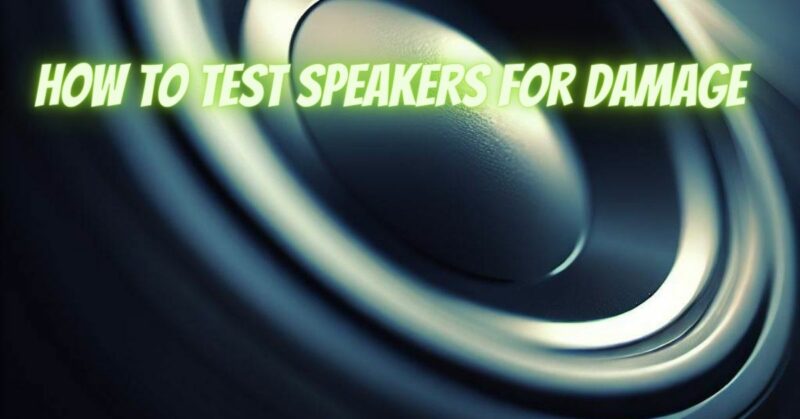Testing speakers for damage is essential for maintaining optimal sound quality and troubleshooting audio issues. By performing simple yet effective tests, you can identify potential problems such as blown drivers, damaged cones, or faulty connections. In this guide, we will walk you through various methods to test speakers for damage, helping you ensure their performance and longevity.
- Visual Inspection: Begin by visually inspecting the speakers for any visible signs of damage. Look for:
- Tears, punctures, or cracks in the speaker cone.
- Loose or detached speaker grille.
- Damaged or disconnected wiring connections.
- Warped or misshapen driver surrounds.
- Unusual discoloration or staining on the speaker components.
- Listening Test: Conduct a listening test to assess the overall sound quality and detect any noticeable issues. Play various audio sources, including music, speech, and sound effects, and carefully listen for the following:
- Distorted or muffled sound.
- Crackling, popping, or buzzing noises.
- Imbalanced audio levels between channels (if applicable).
- Lack of clarity or detail in the sound reproduction.
- Speaker Balance Test: Use a balance test to check the relative output of each speaker in a multi-speaker setup. Play a test tone or music track that pans between the left and right channels. Listen for:
- Consistent volume levels between speakers.
- Any imbalance in sound output.
- Dead spots or areas where sound is noticeably weaker.
- Polarity Test: Ensure that the speaker wiring is properly connected and the speaker polarity is correct. Incorrect polarity can lead to phase cancellation and compromised audio quality. Perform the following test:
- Play a track with a strong and steady bass line.
- Place your hand lightly against the center of each speaker cone.
- If you feel vibrations from both speakers moving in the same direction, the speaker polarities are correct. If the vibrations are moving in opposite directions, reverse the wiring connections of one speaker.
- Frequency Sweep Test: Use a frequency sweep or tone generator to check the speaker’s ability to reproduce different frequencies. Starting from low frequencies and gradually moving to high frequencies, listen for any abnormalities, such as:
- Distortion or clipping at specific frequency ranges.
- Sudden drop-offs or peaks in audio output.
- Excessive resonance or vibrations from specific drivers.
- Continuity Test (for Passive Speakers): For passive speakers, you can perform a continuity test to check for wiring continuity and potential speaker coil damage. Use a multimeter set to continuity mode and:
- Disconnect the speaker from the audio system.
- Touch the multimeter probes to the speaker terminals.
- If you hear a beep or see a continuity reading, the wiring is intact. No sound or fluctuating readings may indicate a damaged voice coil.
Conclusion:
Regularly testing your speakers for damage helps ensure optimal sound reproduction and identify potential issues early on. By combining visual inspection, listening tests, balance tests, polarity checks, frequency sweeps, and continuity tests, you can effectively assess the condition of your speakers and take necessary steps for maintenance or repair. If you encounter significant problems or are unsure about the results, consulting a professional audio technician can provide further assistance and guidance.


